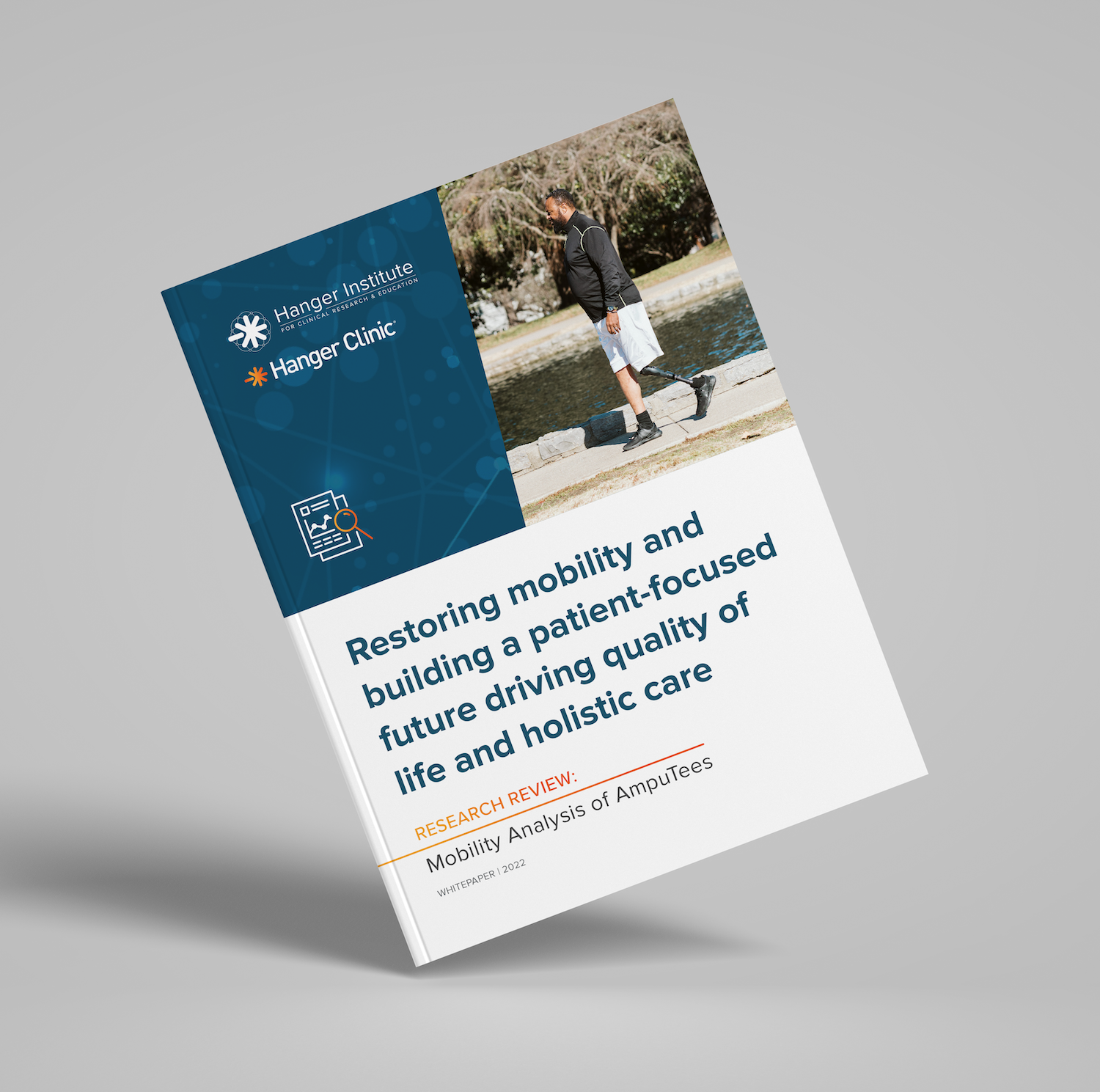
Mobility Analysis of AmpuTees
The prevalence of lower limb amputations in the United States continues to rise with a projected population of 3.6 million amputees by 2050, up from 1.6 million in 2005.1 Accompanying the rise in patients is a shift in healthcare policies that place increased emphasis on patient-centered outcomes as they relate to prosthetic mobility.2,3
While prosthetic rehabilitation has traditionally focused on restoring functional mobility, there is now a need to go beyond that and better understand the impact of improved mobility holistically.

MAAT is comprised of seven separate landmark studies that represent one of the largest multicenter retrospective analyses of mobility among users of lower limb prostheses. The series seeks to clarify the concept of prosthetic mobility as it relates to such considerations as satisfaction, quality of life, comorbid health conditions, and prosthetic component choices.
1) Ziegler-Graham K, MacKenzie E, Ephraim P, et al: Estimating the prevalence of limb loss in the United States: 2005 to 2050. Arch Phys Med Rehabil 2008;89:422–9. 2) Patient Centered Outcomes Research Institute, http://www.pcori.org (accessed July 2017). 3) Patient-reported outcomes measurement information system. National Institutes of Health Office of Strategic Coordination—the common fund, https://commonfund.nih.gov/promis/index (accessed July 2017).
Research Review Whitepaper
Restoring Mobility and Building a Patient-Focused Future Driving Quality of Life and Holistic Care
The Mobility Analysis of AmpuTees (MAAT) series is comprised of seven separate landmark studies and seeks to further our understanding of prosthetic mobility as it relates to such considerations as satisfaction, quality of life, comorbid health conditions, and prosthetic component choices.

MAAT 1: Quality of Life and Satisfaction are Strongly Related to Mobility for Patients with a Lower Limb Prosthesis
Prosthetics and Orthotics International
October 2017
Maximizing mobility through prosthetic rehabilitation positively impacts quality of life and satisfaction.
MAAT 2: Comorbidities and Mobility in Lower Limb Prosthesis Users
American Journal of Physical Medicine & Rehabilitation
November 2018
Comorbidities including diabetes, osteoporosis, heart failure, COPD, and obesity, do not significantly impact prosthetic mobility.
MAAT 3: Matching Individuals Based on Comorbid Health Reveals Improved Function for Above-Knee Prosthesis Users with Microprocessor Knee Technology
Assistive Technology The Official Journal of RESNA
December 2018
Microprocessor knee technology improves mobility for above-knee limb loss patients and cuts in half the functional gap between below-knee and above-knee users.
MAAT 4: Classification Tree Analysis for Probability of Lower Limb Prosthesis User Functional Potential
Assistive Technology The Official Journal of RESNA
February 2019
A classification tree analysis was developed to effectively predict the probability of a lower limb prosthetic patient’s functional potential and inform K-Level designation.
MAAT 5: Impact of Five Common Prosthetic Ankle-Foot Categories for Individuals with Diabetic/Dysvascular Amputation
Journal of Rehabilitation and Assistive Technologies Engineering
February 2019
Prosthetic ankle-foot selection directly impacts functional mobility for patients with an amputation due to diabetes and/or vascular disease.
MAAT 6: Mobility, Satisfaction, and Quality of Life among Long-Term Dysvascular/Diabetic Prosthesis Users–Results of a Cross-Sectional Analysis
Journal of Prosthetics and Orthotics
February 2020
Patients with vascular disease / diabetes who remained actively engaged in prosthetic rehabilitation as far out as 7 years post-amputation experienced high levels of quality of life, satisfaction, and sustained mobility.
MAAT 7: Normative Mobility Values for Lower Limb Prosthesis Users of Varying Age, Etiology, and Amputation Level
American Journal of Physical Medicine & Rehabilitation
December 2021
Mobility seems to decline at different rates across amputation levels for cancer, congenital, and trauma compared to diabetes/dysvascular, and there is a general decline in mobility due to aging.
Clinical Outcomes
The MAAT series stems from the adult lower limb prosthetic clinical outcomes protocol currently utilized by Hanger Clinic.
Latest Updates
Subscribe to stay up-to-date on our latest posts.


